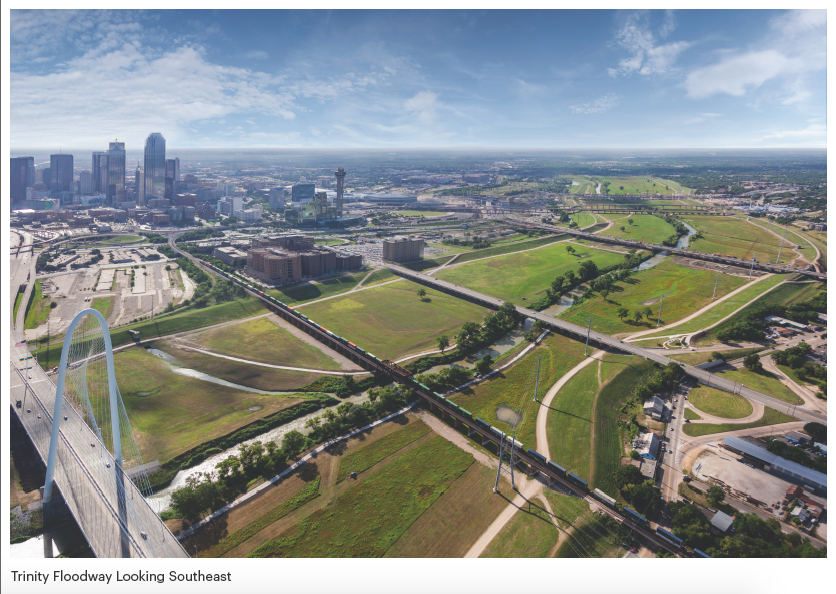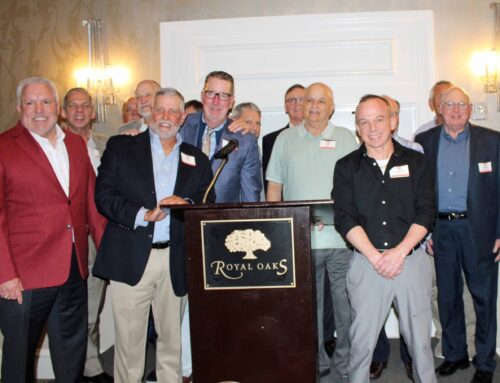Will anyone ever find a palatable solution for Trinity?
Like a nervous public speaker uncertain of what to do with her hands, the City of Dallas doesn’t quite know what to do with the parkland between our Trinity levees. Since voters approved the original Trinity River Project bond proposition nearly two decades ago, the city has been fidgeting and fiddling, regularly revising its plans for the Trinity Park, never seemingly comfortable with the result.
In 1998, supporters of the proposed Trinity River Project regaled voters with fantastic watercolors promising a transformed floodway with grand lakes and jaunty sail boats. In 2003, this fantasy was further defined when then-Mayor Laura Miller brought in nationally renowned designers to create the Balanced Vision Plan, which included an elaborate park scheme.
That plan was revised a few years later when we learned that the enormous lakes had to be significantly downsized to accommodate financial and technical realities. We witnessed a bizarre new vision for the park last year that included a juggling French mime (is there any other kind?), zip lines and rings of fire (among other odd extravagances).
Now, at Mayor Mike Rawlings request, the park is undergoing yet another update. The problem is, every time we try to impose some world-classiness on the Trinity, we end up mucking it up.
Last month, the U.S. Army Corps of Engineers — which has the final word on what transpires between our levees — chastised the City of Dallas for navigation problems on the river due to the so-called Dallas Standing Wave. The Standing Wave is a whitewater kayaking course the City of Dallas built five years ago at a cost of $4 million. It’s been plagued with problems from the get-go (but to be fair, who could have guessed that cramming a bunch of rocks and concrete into the Trinity River was a bad idea?)
The Standing Wave was supposed to be a “quick win” for the Trinity River Project, but it has proven to be neither quick nor winning, and we ended up with an impassable and arguably unsafe water feature. The corps is now demanding a fix, and taxpayers are on the hook for another $4 million to get us out of this mess.
Throw in the clear-cutting debacle at the Trinity golf course, the animal-cruelty scandal at the Trinity Horse Park, the improper draining of a Trinity pond and, well, it’s not unreasonable to get nervous when the city proposes to revisit the design of the Trinity Park.
Instead of redesigning the park for the umpteenth time, why not refocus our energies on something more tangible, like creating park access? That’s the singular problem with the park, after all — that it’s nearly impossible to get into, absent boat or bike. So why not make access the number one priority? Not the toll road, not a park redesign, not extravagant park features. Just something plain and simple, like accessibility? If we design too far beyond that, I fear we risk damaging our most significant natural asset.
We must come to terms with the fact that the parkland lying in our Trinity River Floodway will never be a manicured, Versailles-like garden, a bustling river-walk or a thrilling amusement park. Our Trinity Park doesn’t need to be. It shouldn’t be. I suspect the City of Dallas continuously seeks new plans for the Trinity Park because it just can’t wrap its head around the fact that our park is just fine the way it is: a vast swath of green space in the heart of our city, home to myriad wildlife, a beautiful respite from the bustle of urban living — all of which resulted from the unlikely but serendipitous combination of a river relocation and real estate rush in the 1930s.
I fear that the City of Dallas sees a natural beauty like the Trinity Park and immediately begins planning where to nip and tuck, augment and adjust. Here we would do well to stop plotting an extreme makeover and simply appreciate what we’ve got.






